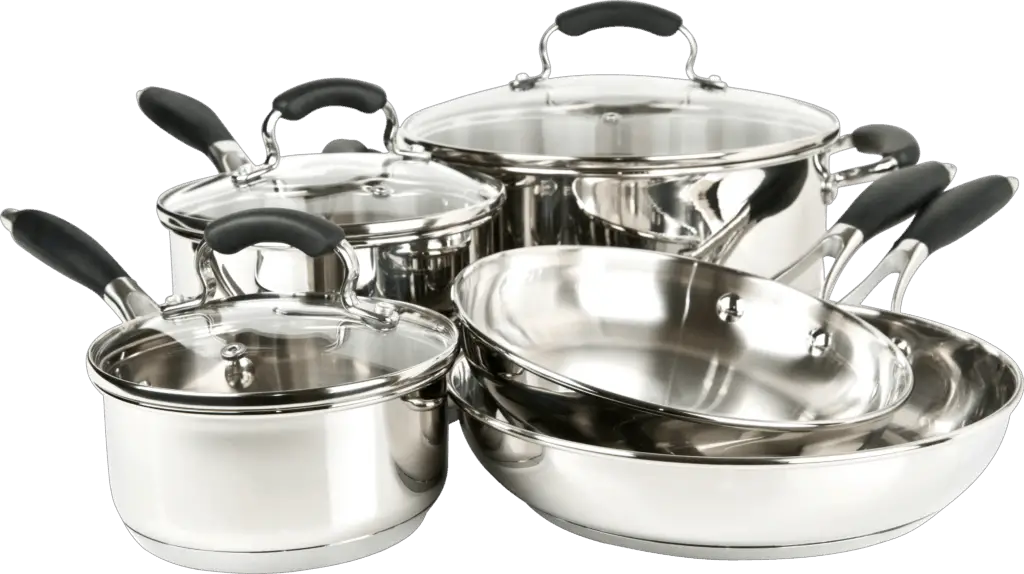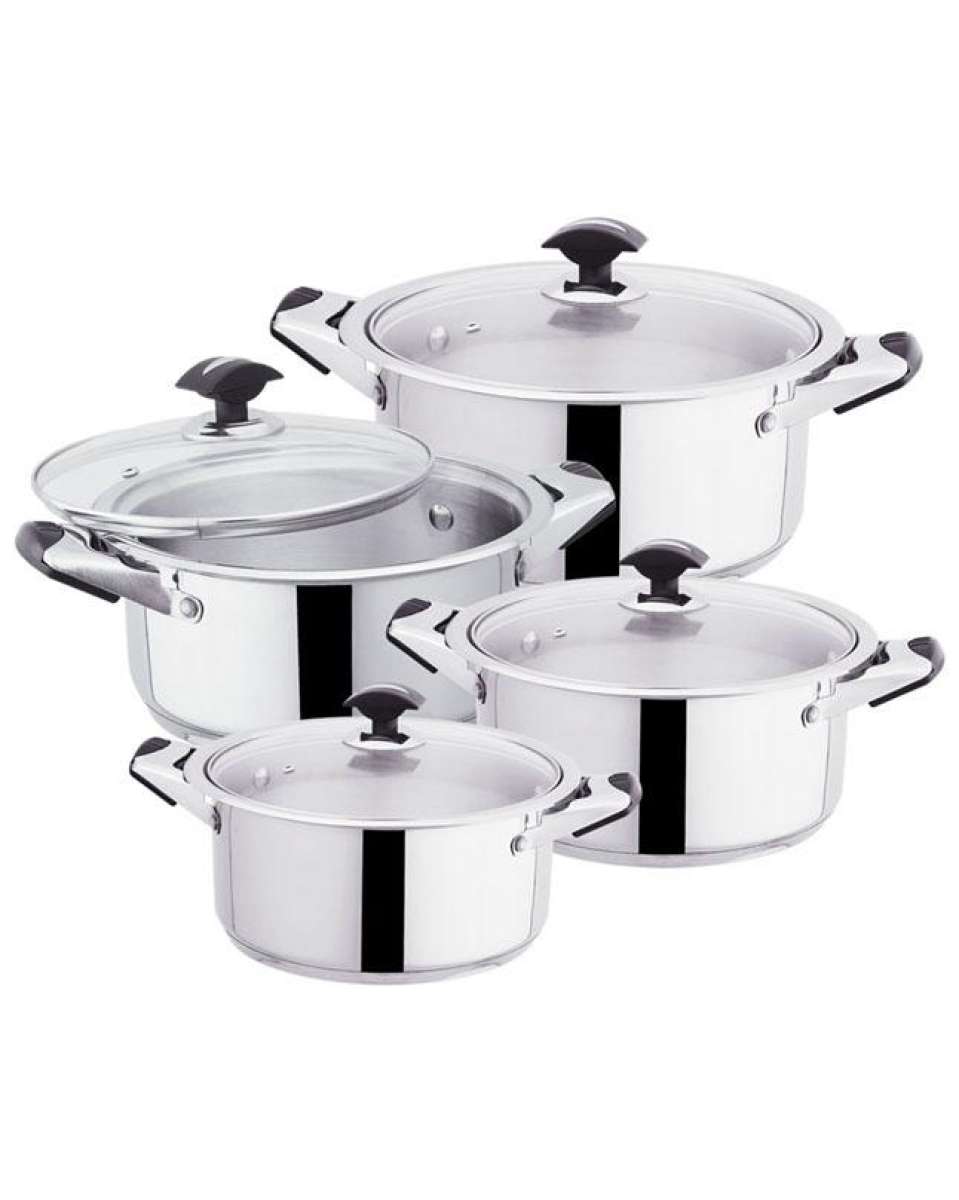Navigating Stainless Steel Cookware: A Practical Guide
Stainless steel pots and pans are known for their strength and versatility in the kitchen. Many home cooks encounter challenges when trying to use them efficiently. It’s more than just putting ingredients in and hoping for a good outcome; it requires understanding the material to achieve the best results. This guide aims to simplify the process, making your stainless steel experience positive. We’ll cover the essential steps, from heating to cleaning, to ensure your cooking turns out well. It’s true that nobody wants a burnt mess or food sticking to the pan. So, let’s explore how to make your stainless steel pots useful kitchen tools.
The appeal of stainless steel is its non-reactive quality, meaning it doesn’t change the flavor of your food. This makes it good for acidic foods like tomatoes. However, this same quality can cause food to stick if not used correctly. We’ll discuss how to heat the pan properly, which is key to avoiding this common problem. Imagine making perfectly seared scallops or a delicate sauce without any sticking. It’s possible with the right method. Forget about endless scrubbing; we’re here to improve your cooking.
Understanding how stainless steel distributes heat is important. It doesn’t heat as evenly as copper or aluminum, but it holds heat very well. This means you need to control the temperature carefully. We’ll talk about how to find the right cooking temperature, avoiding both burning and undercooking. Picture a perfectly browned steak or a gently simmered stew, all achieved with precise heat control. It’s about being in control and understanding the details.
Finally, we’ll talk about cleaning and taking care of the cookware. Stainless steel is easy to clean, but certain methods can help it last longer and stay looking good. We’ll explore ways to remove tough food residue and prevent scratches. Think of it as caring for your cookware, ensuring it remains a useful tool for a long time. This journey is about building confidence in your cooking and enjoying the process.
The Essential Preheating Process: Building a Strong Foundation
The Water Test: A Guide to Perfect Heating
Preheating is crucial for successful stainless steel cooking. It’s not just turning on the stove; it’s reaching the right temperature before adding anything. The water test is a simple way to see if your pan is ready. Sprinkle a few drops of water on the hot surface. If the water forms beads and moves across the pan, you’ve reached the right temperature. This shows the pan’s surface is ready, creating a non-stick area. Think of it as a small water dance, indicating readiness.
Why is this important? Because adding food to a cold or not hot enough pan will likely cause sticking. The food will stick to the metal before the surface is ready, leading to hard cleanup and possibly ruined food. Imagine trying to flip a delicate fish and finding it stuck to the pan. It’s a cooking problem we want to avoid. So, patience is important. Let your pan heat thoroughly, and you’ll have easy cooking and cleanup.
Also, the water test helps you understand your stove’s heat and the pan’s reaction. Each stove and pan is different, and this method helps you adjust. It’s about knowing your cookware, understanding its quirks. Think of it as a gentle introduction, a way to build familiarity. This process may take a few tries, but it’s worth it.
Remember, don’t overheat the pan. Too much heat can damage the metal and burn the food. Aim for medium heat, and let the pan slowly reach the right temperature. It’s a careful balance between patience and precision. This approach will prevent sticking and ensure even cooking and good results. It’s about mastering controlled heat, turning your cooking from guessing to expertise.
Oil and Fat: The Helpful Lubricants for Stainless Steel
Choosing the Right Oil for Your Cooking Needs
Choosing the right oil or fat is as important as preheating. Different oils have different smoke points, which is the temperature at which they start to break down and taste burnt. For high-heat cooking, like searing or frying, choose oils with high smoke points, like avocado, grapeseed, or refined coconut oil. Imagine a perfectly seared steak ruined by the taste of burnt oil. It’s a cooking problem we must avoid. So, choose carefully.
For lower-heat cooking, like sautéing or simmering, oils like olive oil or butter are good. But be aware of their smoke points, as they can burn at higher temperatures. Think of it as matching the right oil to the right cooking, ensuring a good and flavorful result. The choice of oil can change the final dish, so don’t underestimate it. It’s about understanding the details of flavor and heat.
When adding oil, make sure the pan is preheated. Add the oil and let it heat before adding your ingredients. This creates a barrier between the food and the pan, preventing sticking. Think of it as creating a protective layer, ensuring easy cooking. This step is important for delicate foods like fish or eggs, which tend to stick. It’s about building layers of protection, ensuring cooking success.
Also, consider the flavor of the oil. Olive oil, for example, adds a distinct flavor that can enhance certain dishes. Butter adds richness, while neutral oils like grapeseed let the natural flavors of the ingredients stand out. It’s about understanding the subtle details of flavor and how they work with your ingredients. Think of it as painting with flavors, creating a cooking masterpiece. This attention to detail will improve your cooking.
Temperature Control: The Key to Even Cooking and Delicious Results
Understanding Heat Distribution and Adjustments
Stainless steel, while good at holding heat, doesn’t spread it as evenly as other materials. This means careful temperature control is important to avoid hot spots and ensure even cooking. Start with medium heat and adjust as needed. It’s about finding the right balance between heat and precision. Think of it as a careful process, ensuring every step is controlled.
Use a thermometer to accurately measure the temperature of your pan. This avoids guessing and helps you keep consistent heat during cooking. Imagine the problem of a burned outside and an undercooked inside. It’s a cooking problem. So, precision is important. This level of control will change your cooking, ensuring consistent good results.
Avoid putting too much food in the pan, as this can lower the temperature and cause uneven cooking. Cook in batches if needed, allowing each piece of food to sear or sauté properly. Think of it as giving each ingredient time to cook well, ensuring every part reaches its full potential. This approach will improve the texture and flavor of your food and improve the cooking experience.
Finally, be patient. Let your food cook without moving it around too much. This allows a crust to form, preventing sticking and enhancing flavor. Think of it as letting the ingredients transform and develop their best. This patience will result in perfectly cooked dishes.
Cleaning and Maintenance: Keeping Your Stainless Steel Investment
Gentle Cleaning Techniques for Longevity
Cleaning stainless steel doesn’t have to be hard. Avoid harsh cleaners or steel wool, as these can scratch the surface. Instead, use warm, soapy water and a soft sponge or cloth. For tough food residue, soak the pan in hot, soapy water for a few minutes before gently scrubbing. Think of it as giving your pan a gentle clean, ensuring its longevity.
For burned-on food, try a paste of baking soda and water. Apply the paste to the area and let it sit for a few minutes before scrubbing. This natural cleaner is effective and gentle, removing tough residue without damage. Imagine the satisfaction of making your pan look new again. It’s a simple way to maintain your investment.
To avoid water spots, dry your stainless steel pots and pans right after washing. Use a soft cloth to dry the surface, preventing mineral deposits. Think of it as giving your cookware a final polish, ensuring it shines. This simple step will keep your pans looking good.
Regular maintenance is key to making your stainless steel cookware last. Avoid storing them wet, and consider polishing them sometimes with a stainless steel cleaner. This will help keep their shine and prevent corrosion. Think of it as a routine checkup, ensuring your cookware stays in good condition. This approach will save you time and money.
Frequently Asked Questions (FAQs)
Q: How can I stop food from sticking to my stainless steel pan?
A: The key is to preheat the pan correctly. Use the water test to know when it’s ready. Also, use the right oil and let it heat before adding food. Keeping the heat consistent is also important.
Q: What’s the best way to clean burned-on food from stainless steel?
A: A paste of baking soda and water is effective. Apply it, let it sit, and then scrub gently. You can also soak the pan in hot, soapy water.
Q: How do I keep my stainless steel pans looking shiny?
A: Dry them thoroughly after washing to prevent water spots. You can also polish them occasionally with a stainless steel cleaner.

Is Stainless Steel Cookware Safe? The Kitchen Journal

Allied Restaurant Supply Cooking Equipment

How To Cook With Stainless Steel Pots And Pans Cooking,

Stainless Steel Valerie Collins Writer

Best Stainless Steel Cookware Brands Review 2022 House Decors
